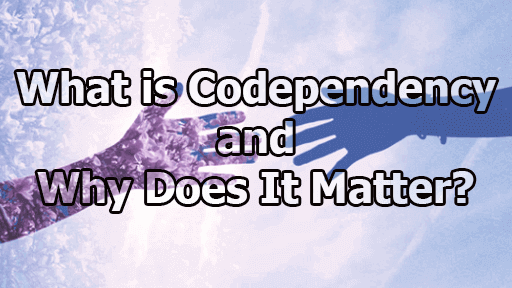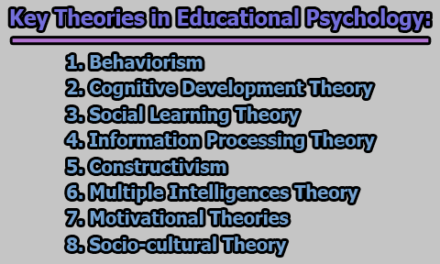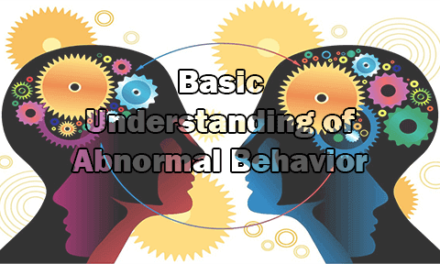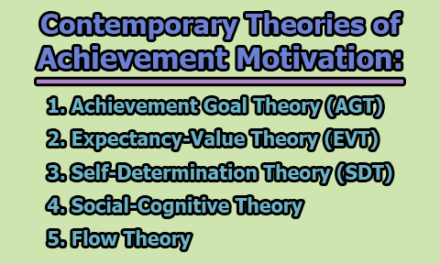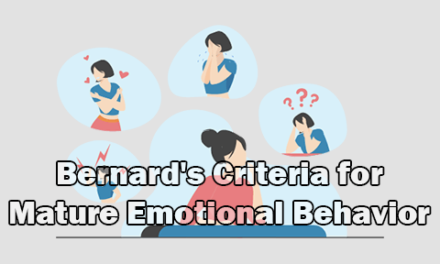What is Codependency and Why Does It Matter?
Codependency is a concept frequently addressed in therapeutic settings, particularly when individuals are navigating mental health concerns, addiction, or challenging family backgrounds. However, its influence is not limited to personal relationships and can substantially affect workplace dynamics (Arman et al., 2021). In professional settings, codependency manifests as excessive reliance on colleagues, blurred boundaries, and misplaced loyalty, leading to dysfunction and reduced productivity (Kelly, 2015; Arman et al., 2021). This article explores the questions “What is codependency and Why does it matter?” by analyzing its negative impact on relationships and providing actionable strategies for mental health professionals to aid client recovery.
What Is Codependency?
The term codependency is frequently used in healthcare and therapeutic settings, particularly in the treatment of individuals struggling with addiction and substance dependence. It commonly describes a pattern of behavior in which one person becomes excessively reliant on another, often in ways that are emotionally, psychologically, or even financially unhealthy. Despite its widespread use, the concept of codependency does not have a universally agreed-upon definition and is not officially classified as a psychological disorder in the Diagnostic and Statistical Manual of Mental Illnesses (DSM), the standard reference used by mental health professionals to diagnose and categorize mental disorders (Bacon & Conway, 2023).
As a working definition, codependency is often characterized by an unhealthy level of emotional or psychological dependence on a significant other, whether that be a partner, parent, child, or close associate. This excessive reliance can manifest in behaviors such as prioritizing another person’s needs at the expense of one’s own well-being, difficulty functioning independently, and an overwhelming need for approval or validation from the other party (Bacon & Conway, 2023; Hunt, 2013).
Some mental health practitioners describe codependency as a dysfunctional relationship dynamic where both individuals struggle with low self-esteem and an inability to establish and maintain healthy boundaries. These relationships may be marked by controlling behaviors, manipulation, and an ongoing cycle of guilt and resentment. In many cases, one individual assumes a caretaker role, enabling destructive habits in the other person, such as substance abuse, financial irresponsibility, or emotional instability. As a result, both parties become trapped in a harmful pattern that reinforces their insecurities and dependency on one another (Bacon & Conway, 2023; Hunt, 2013).
Although codependency is most commonly discussed in relation to addiction and family dynamics, it can also be found in workplace relationships, friendships, and other social interactions. Understanding and addressing the characteristics of codependency is essential for promoting healthier, more autonomous relationships.
Why Does Codependency Matter?
Codependency is a significant concern due to its potential to foster unhealthy and imbalanced relationships. It can lead to:
1. Heightened Personal Distress: The chronic prioritization of others’ needs at the expense of one’s own fundamental requirements for well-being invariably precipitates personal distress. Individuals engaged in codependent patterns frequently experience:
- Elevated Anxiety Levels: Constant worry about the well-being and emotional states of others, coupled with a fear of rejection or disapproval, can lead to persistent anxiety.
- Increased Susceptibility to Depression: The neglect of personal needs, coupled with feelings of being unappreciated or used, can contribute to the development or exacerbation of depressive symptoms, including low mood, loss of interest, and fatigue.
- Diminished Self-Esteem: Basing one’s self-worth on external validation and the perceived needs of others fosters a fragile sense of self, making individuals vulnerable to feelings of inadequacy and low self-esteem.
- Accumulation of Resentment: The consistent act of putting others first while suppressing one’s own desires and needs can breed resentment towards the individuals being prioritized and towards oneself for perpetuating the pattern.
2. Compromised Interpersonal Boundaries: A core characteristic of codependency is the marked difficulty in establishing and maintaining healthy interpersonal boundaries. This impairment can manifest in several detrimental ways:
- Increased Vulnerability to Exploitation: A lack of clear boundaries can make individuals susceptible to being taken advantage of, manipulated, or having their resources (time, energy, finances) exploited by others.
- Tendency Towards Overextension: Difficulty saying “no” and a compulsion to meet the perceived needs of others can lead to overcommitment, burnout, and a feeling of being constantly overwhelmed.
- Erosion of Personal Space: Poor boundaries can result in others encroaching upon one’s physical, emotional, and psychological space, leading to feelings of discomfort and a lack of autonomy.
3. Facilitation of Enabling Behaviors: Codependent individuals often adopt caretaking roles that inadvertently enable unhealthy or destructive behaviors in others. This can include:
- Shielding Individuals from Natural Consequences: By intervening to prevent others from experiencing the negative outcomes of their actions (e.g., bailing someone out of financial trouble, making excuses for their irresponsibility), codependent individuals hinder their opportunity to learn and grow from their mistakes.
- Supporting Addictive Behaviors: Providing financial or emotional support that allows an individual to continue substance abuse or other addictive behaviors inadvertently perpetuates the problem.
- Taking on Responsibilities That Belong to Others: Assuming tasks or obligations that another person is capable of handling undermines their sense of agency and responsibility.
4. Development of Dysfunctional Relationship Dynamics: Codependency fundamentally skews the balance of power and reciprocity within relationships, leading to various forms of dysfunction:
- Power Imbalances: One individual often assumes a dominant, caretaking role, while the other may become more passive or dependent, creating an unequal distribution of power and responsibility.
- Communication Breakdowns: Direct and honest communication is often replaced by indirectness, manipulation, or a reluctance to express personal needs for fear of upsetting the other person.
- Lack of Genuine Intimacy: True intimacy, characterized by mutual vulnerability and authentic connection, is often hindered by the focus on managing the other person’s needs and emotions rather than sharing one’s true self.
- Perpetuation of Unhealthy Cycles: Codependent relationships can become trapped in repetitive patterns of behavior that reinforce dependence, resentment, and a lack of personal fulfillment for both individuals involved.
5. Obstruction of Personal Growth and Autonomy: The excessive preoccupation with the needs and problems of others inherent in codependency significantly impedes individual development:
- Suppressed Self-Discovery: An outward focus leaves little time or energy for introspection, hindering the process of understanding one’s own values, beliefs, and desires.
- Delayed Pursuit of Personal Goals: The commitment to prioritizing others often comes at the expense of pursuing one’s own aspirations, leading to feelings of stagnation and unfulfillment.
- Impeded Development of Autonomy: The reliance on external validation and the need to be needed by others hinders the development of self-reliance, independent decision-making, and a strong sense of self separate from the relationship.
Codependency matters profoundly because it undermines individual well-being, distorts interpersonal boundaries, enables unhealthy behaviors, fosters dysfunctional relationship patterns, and ultimately hinders personal growth and the development of genuine autonomy. Recognizing and addressing codependent tendencies is therefore crucial for cultivating healthier, more balanced, and fulfilling relationships, and for promoting overall psychological well-being.
Signs & Symptoms of Codependency:
Understanding the characteristics of codependency is essential for recognizing and addressing its impact on relationships. Codependency often develops gradually and manifests through a pattern of unhealthy emotional, psychological, and behavioral responses. These behaviors can affect a person’s ability to establish boundaries, maintain self-worth, and engage in mutually supportive relationships. Below are the key signs and symptoms commonly observed in individuals struggling with codependency (Hunt, 2013; Bacon & Conway, 2023):
- Caretaking: Codependent individuals often prioritize the needs of others over their own, feeling a strong sense of duty to care for and “rescue” others, even when it comes at the expense of their own well-being. They may feel responsible for another person’s happiness, health, and decisions.
- Feeling Unworthy or Inadequate: Many codependent individuals struggle with low self-esteem and a deep-seated belief that they are not good enough. They may constantly seek validation from others to feel a sense of worth.
- People-Pleasing to Seek Validation and Avoid Confrontation: A strong desire to be liked and accepted can lead to excessive people-pleasing behavior. Codependent individuals may go to great lengths to avoid conflict, even if it means neglecting their own needs or values.
- Poor Boundary Setting and Over-Involvement in Others’ Lives: Boundaries are often weak or nonexistent in codependent relationships. This can lead to enmeshment, where personal identities become intertwined, and one person takes on excessive emotional responsibility for another.
- Suppressing Emotions: Codependent individuals often struggle to express their true emotions. They may repress feelings of anger, sadness, or disappointment out of fear of upsetting others or appearing weak.
- Over-Reliance on Others for Approval and a Sense of Identity: A strong dependence on external validation is a key feature of codependency. Individuals may feel unsure of who they are outside of their relationships and rely on others to define their self-worth.
- Attempting to Control Others’ Behaviors to Feel Needed and Secure: Many codependent individuals try to control those around them, believing that if they can “fix” someone else, they will feel secure and needed. This control can manifest in various ways, such as giving unsolicited advice, micromanaging, or manipulating situations.
- Experiencing Fear of Abandonment: A deep-seated fear of being alone or abandoned often drives codependent behavior. This fear may cause individuals to tolerate unhealthy relationships, even when they are harmful.
- Struggling to Form and Maintain Intimate Relationships: Because of their difficulty with boundaries and emotional dependence, codependent individuals often find it challenging to establish and maintain healthy, balanced relationships.
- Experiencing Chronic Stress and Anxiety: The emotional burden of constantly caring for others and neglecting personal needs can lead to ongoing stress and anxiety. This heightened emotional strain may contribute to physical health issues over time.
- Feeling Excessive Responsibility Toward Another: A codependent individual may take on a parental or caretaker role, feeling solely responsible for another person’s well-being, choices, and emotions, often to their own detriment.
- Trying to Fix Others’ Problems: Codependent individuals often feel compelled to solve others’ issues, even when it is unnecessary or unwanted. This “fixer” mentality reinforces the cycle of dependency in relationships.
- Doing for Others What They Can Do for Themselves: In an effort to feel useful and needed, codependent individuals may take over tasks that others are capable of handling. This behavior enables dependency rather than fostering independence.
- Appearing Rigid and Judgmental: Codependent individuals may develop a rigid sense of morality and judge others harshly, particularly when their attempts to “help” are not well received. This judgment often stems from their own insecurities and need for control.
- Feeling Guilty When Standing Up for Themselves: Expressing personal needs or setting boundaries can evoke strong feelings of guilt in codependent individuals, as they fear disappointing or upsetting others.
- Difficulty Receiving Kindness: Many codependent individuals find it uncomfortable to accept praise, kindness, or acts of generosity. They may feel unworthy of love and struggle to believe that others could genuinely care for them without expecting something in return.
- Trying to Be Perfect to Avoid Criticism: A strong fear of rejection or criticism can lead to perfectionistic tendencies. Codependent individuals may feel they must always be “perfect” to gain approval and avoid disapproval from others.
- Seeking Approval: Constantly seeking validation and reassurance from others is a core feature of codependency. Individuals may feel anxious or unfulfilled if they do not receive external affirmation.
- Attracting Needy People: Codependent individuals often find themselves in relationships with people who are emotionally or physically dependent on them. This dynamic reinforces their belief that they are only valuable when they are taking care of someone else.
- Constantly Feeling Emotionally Exhausted: The ongoing emotional labor of maintaining codependent relationships can leave individuals feeling drained and overwhelmed. Their focus on others’ needs while neglecting their own can lead to burnout and emotional exhaustion.
Recognizing these signs and symptoms is the first step in addressing codependency. By identifying these patterns, individuals can begin working toward healthier relationships, stronger boundaries, and greater emotional independence.
Causes of Emotional and Relational Codependency:
Emotional and relational codependency can arise from a variety of factors, many of which stem from early life experiences, family dynamics, and psychological coping mechanisms. While some causes are environmental, others may have biological or genetic influences. Understanding these root causes can help individuals recognize and address codependent behaviors. Below are some of the primary contributors to codependency (Kelly, 2015; Bacon & Conway, 2023):
- Familial Substance Abuse: Growing up in a household where substance abuse is prevalent can create an unstable and chaotic environment. Children and family members often develop codependent behaviors as a way to navigate and manage this dysfunction. A child may take on the role of a caregiver, attempting to control or fix the situation by supporting, enabling, or protecting the addicted family member. This learned pattern of over-involvement can carry into adulthood, leading individuals to seek out relationships where they feel needed or responsible for someone else’s well-being.
- Neglect and Emotional Abuse: Experiencing neglect or emotional abuse during childhood can significantly shape a person’s sense of self and interpersonal relationships. Children who grow up in emotionally neglectful homes may develop a deep-seated belief that their own needs are unimportant. As a survival mechanism, they may learn to prioritize others’ emotions, seeking approval and validation to gain a sense of worth. Over time, this pattern becomes ingrained, making it difficult for them to set healthy boundaries or recognize their own needs in relationships.
- Denial and Shame: Negative emotions such as denial and shame are powerful forces that contribute to codependent behaviors. Individuals who experience shame, often due to childhood trauma, emotional neglect, or persistent criticism, may struggle with low self-worth. They may seek validation through taking care of others, believing that their value is dependent on their ability to serve and support those around them. Denial also plays a significant role—many individuals in codependent relationships refuse to acknowledge the dysfunction, further reinforcing unhealthy dynamics.
- Early Trauma: Experiencing trauma, especially in childhood, can lead to the development of codependent tendencies. One particularly harmful effect is trauma bonding, a psychological attachment that forms between a victim and their abuser. When a child is repeatedly exposed to emotional, physical, or psychological abuse, they may become conditioned to associate love with pain, inconsistency, or instability. As a result, they may develop an unconscious pattern of seeking relationships that replicate this dynamic, believing that love must be earned through sacrifice, caretaking, or endurance.
- Learned Helplessness: Repeated exposure to situations where one feels powerless, particularly in the context of addiction within the family, can lead to learned helplessness—a psychological state in which individuals believe that their efforts to create change are futile. Family members of addicts often experience cycles of hope and disappointment, trying to help their loved one overcome addiction, only to witness repeated relapses and failures. This learned helplessness can reinforce codependent behaviors, as individuals continue to overextend themselves despite recognizing that their efforts are unlikely to change the outcome.
- Genetic Triggers: While the direct genetic basis of codependency remains unclear, research suggests that genetic factors may contribute indirectly by influencing personality traits, mental health conditions, and susceptibility to addiction (Botticelli et al., 2020). Individuals who are genetically predisposed to anxiety, depression, or substance abuse may be more vulnerable to developing codependent behaviors, particularly if these traits are reinforced by environmental factors. Additionally, if a family has a history of addiction, the likelihood of developing codependent patterns increases, as children may learn unhealthy relational dynamics from an early age.
Consequences of Codependency:
Codependency can have a profound impact on individuals and relationships, often leading to emotional, psychological, and behavioral consequences that may not be immediately obvious. While many mental health practitioners focus on the outward manifestations of codependency, it is equally important to consider the emotional toll on those affected. The consequences of codependency can be long-lasting and deeply ingrained, making it difficult for individuals to recognize and break free from these harmful patterns. Below are some of the key consequences of codependency (Hunt, 2013; Seed, 2024):
- Loss of Personal Identity: One of the most significant consequences of codependency is the loss of personal identity. As individuals become increasingly focused on their partner, friend, or family member, their own desires, goals, and needs are often neglected. Over time, they may struggle to define themselves outside of the relationship, losing sight of their individuality. This can make it challenging for them to make independent decisions, pursue personal aspirations, or even recognize their own preferences and interests.
- Low Self-Worth: A pervasive sense of low self-worth is commonly experienced by those in codependent relationships. Many codependent individuals derive their self-esteem from their ability to care for and support others. When their worth is tied to external validation rather than their own sense of self, they may feel unworthy, inadequate, or undeserving of love unless they are constantly proving their value through acts of service and sacrifice. This cycle of self-neglect can lead to deep-seated feelings of unworthiness and self-doubt.
- Emotional Rollercoaster: Codependent relationships often involve intense emotional highs and lows. One moment, an individual may feel needed, loved, and secure, only to experience feelings of rejection, disappointment, or despair the next. These emotional fluctuations can be exhausting and unpredictable, leading to anxiety, stress, and emotional burnout. Over time, the constant turmoil can take a toll on mental well-being, making it difficult for individuals to maintain emotional stability.
- Abandonment Fears: A fear of abandonment is a central theme in many codependent relationships. The emotional dependence on another person often leads to overwhelming anxiety about being left alone. This fear can cause individuals to stay in unhealthy relationships, tolerate mistreatment, or go to extreme lengths to keep the other person close. Even when the relationship is harmful, the fear of being alone can feel more unbearable than the reality of staying in a dysfunctional dynamic.
- Possessiveness and Jealousy: Possessiveness and jealousy are common emotions experienced in codependent relationships. Because individuals often rely on their partner or loved one for their sense of security and self-worth, any perceived threat—such as attention from others, time spent apart, or changes in behavior—can trigger intense feelings of jealousy. These emotions may lead to controlling behaviors, emotional outbursts, or attempts to manipulate the other person to maintain closeness and reassurance. Unfortunately, this only adds further strain to the relationship.
- Denial: Denial is a powerful defense mechanism in codependency. Even when there are clear signs of dysfunction, both individuals may refuse to acknowledge the unhealthy nature of their relationship. They may justify toxic behaviors, minimize their own emotional pain, or believe that their actions are necessary for maintaining the relationship. This denial can prevent them from seeking help, making it difficult to recognize the need for change.
- Difficulty in Boundary Setting: Boundaries are often weak or nonexistent in codependent relationships. Individuals may struggle to differentiate their emotions from those of their partner, feel responsible for fixing others’ problems, or sacrifice their own needs to avoid conflict. The inability to establish and maintain healthy boundaries can result in emotional exhaustion, resentment, and an ongoing cycle of self-sacrifice. Without clear boundaries, it becomes difficult to cultivate a balanced and mutually respectful relationship.
- False Sense of Security: Despite the instability and dysfunction that often characterize codependent relationships, individuals may experience a false sense of security. The deep emotional attachment and reliance on the other person can create an illusion of stability, even when the relationship is chaotic and unpredictable. This false security can make it difficult for individuals to leave the relationship or recognize the potential for healthier dynamics elsewhere. The fear of change or the unknown can keep them trapped in a situation that ultimately harms their emotional well-being.
Codependency in Relationships:
Codependency is a complex relational dynamic that can have profound and lasting effects on interpersonal relationships. Individuals who struggle with codependency often develop an excessive reliance on their partner, leading to patterns of emotional enmeshment, poor boundaries, and an imbalance of power. These behaviors can create cycles of dysfunction that negatively impact both partners, reinforcing unhealthy relationship patterns and preventing personal growth and emotional fulfillment (Bacon & Conway, 2023).
The Role of Attachment Styles: Research indicates that childhood experiences and early attachment patterns play a significant role in shaping codependent behaviors in adulthood. The way individuals form and maintain relationships is largely influenced by their attachment style, which is developed during infancy and early childhood based on interactions with caregivers. Insecure attachment styles, particularly ambivalent (anxious) and avoidant attachment, are more likely to contribute to the development of codependent romantic relationships (Collins, 2023).
- Ambivalent (Anxious) Attachment and Codependency: Individuals with ambivalent attachment often experience intense fear of abandonment and seek constant reassurance from their partners. They may display clingy behaviors, emotional dependence, and an overwhelming need for approval. These traits align closely with codependent tendencies, as individuals with anxious attachment often:
- Over-prioritize their partner’s needs at the expense of their own well-being.
- Seek validation through the relationship, believing that their worth depends on their partner’s approval.
- Struggle with emotional regulation, experiencing anxiety and distress when their partner is unavailable or emotionally distant.
- Have difficulty setting boundaries, fearing that asserting their needs may result in rejection or abandonment.
The emotional instability associated with anxious attachment can create a dynamic where the individual becomes overly invested in their partner’s emotions and behaviors, reinforcing a cycle of codependency.
- Avoidant Attachment and Codependency: While avoidant attachment is often associated with emotional withdrawal and detachment, it can also contribute to codependent behaviors in a more subtle way. Individuals with avoidant attachment tend to:
- Suppress their own emotional needs, avoiding vulnerability or deep emotional connections.
- Fear dependency and intimacy, leading them to push partners away while still desiring closeness.
- Attract anxious or codependent partners, creating a push-pull dynamic where one partner is overly needy, and the other remains distant.
In some cases, avoidant individuals may enter codependent relationships where they feel responsible for their partner’s emotional well-being but resist deep emotional engagement themselves. This creates an unhealthy balance in which they may enable the other person’s dependency while maintaining emotional distance.
- How Attachment Styles Influence Codependent Relationships: The interplay between different attachment styles can reinforce codependent patterns in relationships. One of the most common and dysfunctional pairings in codependent relationships is between anxious and avoidant partners:
- The anxious partner craves emotional closeness and constantly seeks reassurance.
- The avoidant partner withdraws or becomes distant, reinforcing the anxious partner’s fear of abandonment.
- The anxious partner doubles down on codependent behaviors, trying to “fix” or control the relationship to maintain connection.
- The avoidant partner resists and pulls away further, deepening the cycle of insecurity and emotional distress.
This cycle perpetuates the emotional instability and unhealthy reliance characteristic of codependent relationships. Over time, both individuals may feel trapped—one feeling suffocated by excessive emotional demands and the other feeling perpetually insecure and unfulfilled.
- Breaking the Cycle of Codependency: Recognizing the impact of attachment styles on codependent behaviors is the first step toward creating healthier relationships. Strategies to break the cycle of codependency include:
- Developing self-awareness: Understanding personal attachment patterns and emotional triggers can help individuals recognize when they are engaging in codependent behaviors.
- Practicing emotional independence: Building self-esteem, pursuing personal goals, and fostering a sense of identity outside of the relationship can reduce emotional over-reliance on a partner.
- Setting healthy boundaries: Learning to communicate needs while respecting personal space can create more balanced and fulfilling relationships.
- Seeking professional support: Therapy, particularly approaches such as attachment-based therapy or cognitive-behavioral therapy (CBT), can help individuals address deep-rooted attachment issues and develop healthier relational patterns.
Interdependent vs. Codependent Relationships:
While both interdependent and codependent relationships involve emotional connections, the key difference lies in the balance of autonomy and support. In interdependent relationships, both individuals maintain their sense of self while fostering a mutually supportive dynamic. In contrast, codependent relationships are characterized by an unhealthy reliance on one another, often leading to emotional enmeshment and a loss of personal identity (Collins, 2023; Bacon & Conway, 2023).
Characteristics of an Interdependent Relationship: Interdependent relationships are rooted in a secure attachment style, which allows both individuals to feel safe, valued, and emotionally fulfilled without being overly reliant on their partner for validation. These relationships are built on:
- Trust and Mutual Respect: Partners in an interdependent relationship trust one another’s intentions and decisions without the need for constant reassurance. Respect for each other’s individuality fosters a sense of security and emotional stability.
- Healthy Boundaries: Each person maintains their own identity, personal interests, and friendships outside of the relationship. They feel comfortable saying “no” and expressing their needs without fear of rejection or guilt.
- Self-Worth and Emotional Independence: Each individual has a strong sense of self-worth that is not dependent on their partner’s approval or validation. They can experience emotional fulfillment both within and outside of the relationship.
- Balanced Support and Independence: While partners provide emotional and practical support to one another, they do not sacrifice their own well-being to “fix” or control the other person. They celebrate each other’s successes without feeling threatened or insecure.
- Emotional Regulation and Healthy Conflict Resolution: Disagreements are handled with open communication and mutual respect rather than fear, manipulation, or emotional outbursts. Each person takes responsibility for their own emotions rather than expecting their partner to regulate them.
Characteristics of a Codependent Relationship: In contrast, codependent relationships often arise from insecure attachment styles and are marked by emotional entanglement, poor boundaries, and an imbalance of power. Some of the key characteristics include:
- Excessive Emotional Reliance: One or both partners rely on the other for their sense of self-worth and emotional stability. Fear of being alone or abandoned leads to unhealthy levels of dependence.
- Poor or Nonexistent Boundaries: Codependent individuals often struggle to assert their own needs, fearing conflict or rejection. They may neglect their own well-being in an effort to cater to their partner’s demands.
- Low Self-Worth and Need for Validation: Their self-esteem is tied to how much they do for others, making them feel unworthy unless they are constantly “needed.” They may sacrifice their happiness and personal growth to maintain the relationship.
- Control and Enabling Behaviors: Codependent partners may try to control their partner’s behavior or emotions to maintain a sense of security. They may enable destructive behaviors, such as addiction or irresponsibility, to avoid confrontation.
- Fear-Based Conflict and Emotional Instability: Codependent relationships often involve emotional highs and lows, leading to cycles of guilt, resentment, and insecurity. Conflict is often avoided, leading to unspoken frustrations and passive-aggressive behavior.
Key Differences Between Interdependence and Codependency:
| Aspect | Interdependent Relationship | Codependent Relationship |
| Emotional Support | Mutual, balanced, and voluntary | One-sided, excessive, or obligatory |
| Boundaries | Clearly defined and respected | Weak or nonexistent |
| Self-Worth | Comes from within, independent of partner | Dependent on external validation |
| Conflict Resolution | Open and respectful communication | Avoidance, control, or emotional outbursts |
| Independence | Each person maintains their identity | One or both partners lose their sense of self |
| Fear of Abandonment | Low—partners feel secure | High—partners fear being alone |
| Decision-Making | Collaborative, respecting autonomy | Often dominated by one partner or dictated by need for approval |
Transitioning from Codependency to Interdependence: Breaking free from codependency and fostering interdependence requires self-awareness, emotional growth, and a commitment to building healthier relationship patterns. Some strategies include:
- Developing self-esteem and emotional independence: Engaging in self-care, setting personal goals, and cultivating hobbies outside of the relationship.
- Establishing and enforcing healthy boundaries: Learning to say “no” without guilt and recognizing personal needs as equally important.
- Seeking therapy or professional guidance: Working with a therapist can help individuals recognize codependent behaviors and develop healthier attachment patterns.
- Practicing healthy communication: Expressing needs, emotions, and concerns openly without fear of rejection or resentment.
Assessing Codependency (Tests and Quizzes):
Assessing the degree of codependency in individuals and their relationships is a crucial step in recognizing unhealthy behavioral patterns and working toward positive change. Tests and quizzes serve as valuable tools for mental health professionals to gain deeper insight into a client’s emotional reliance on others, boundary-setting difficulties, and patterns of self-sacrifice. These assessments help clients reflect on their behaviors and thought processes while providing clinicians with measurable indicators of codependent tendencies (Lancer, 2015).
The Codependency Questionnaire: The Codependency Questionnaire, designed as a positive psychology assessment, evaluates more than 20 symptoms of codependency. It consists of true/false questions that encourage self-reflection and help identify problematic patterns in relationships. The questions aim to gauge emotional reliance, self-worth, and boundary-setting skills. Some example questions include:
- I give more weight to my own feelings than those of others.
- I feel very satisfied with my romantic relationships.
- I frequently say “yes” when others ask for help, even if it’s inconvenient for me.
Clients who frequently answer in a way that indicates an imbalance between self-care and care for others may exhibit signs of codependency. The results can be used as a starting point for discussions on emotional independence, self-worth, and the importance of healthy boundaries (Lancer, 2015).
Friel Codependency Assessment Inventory: The Friel Codependency Assessment Inventory, developed by Mental Health America of Northern Kentucky and Southwest Ohio, is a widely used diagnostic tool. It comprises 60 true-or-false questions that assess how an individual’s early family experiences, current relationship dynamics, and self-perception contribute to codependent behaviors. Some of the sample questions include:
- I am happy about the way my family communicated when I was growing up.
- I am satisfied with the number and kind of relationships I have in my life.
- I am satisfied with the way I take care of my own needs.
This assessment provides a score-based evaluation to indicate the level of concern regarding codependency:
- Score below 20 → No significant codependency concerns.
- Score between 21–30 → Moderate codependency concerns.
- Score between 31–45 → Moderate-to-severe need for concern.
- Score over 46 → Severe codependency concerns.
A high score suggests a strong tendency toward codependent behaviors, warranting further self-reflection and possible intervention through therapy or counseling. Clinicians often use this test to track progress over time, helping clients recognize improvements in their emotional independence and boundary-setting skills (Lancer, 2015).
Codependency Assessments Based on Efron’s Codependency Models: Additional codependency assessments are based on Efron’s Codependency Assessment and the Competency Codependency Scale. These tools provide a deeper psychological analysis of an individual’s codependent tendencies by grouping questions into key emotional and behavioral categories.
First Assessment: The First Assessment, based on Efron’s Codependency Assessment, is a structured evaluation designed to measure an individual’s degree of codependency by examining their emotional and behavioral patterns. The test consists of 34 questions divided into eight emotional themes, each representing a core aspect of codependent behavior. These themes provide valuable insights into the underlying emotional struggles contributing to codependency and help mental health professionals tailor interventions accordingly (Lancer, 2015).
1. Fear: Fear is a dominant emotion in codependency, often manifesting as an excessive need for control, approval-seeking, or an intense fear of abandonment. Those struggling with fear-based codependency may avoid conflict at all costs, become overly accommodating, or cling to relationships despite their unhealthy nature.
Sample Questions:
- Do you constantly worry about what others think of you?
- Are you afraid that if you assert your needs, people will abandon you?
- Do you avoid conflict even when it means sacrificing your own well-being?
- Do you feel anxious when someone close to you is upset, even if it has nothing to do with you?
2. Shame and Guilt: Shame and guilt play a significant role in codependency. Many codependent individuals have internalized feelings of unworthiness, often blaming themselves for others’ problems or feeling guilty when prioritizing their own needs.
Sample Questions:
- Do you often feel responsible for other people’s problems or emotions?
- Do you believe you are not “good enough” in your relationships?
- Do you feel guilty when you take time for yourself or say “no” to someone?
- Are you constantly seeking approval from others to feel valuable?
3. Prolonged Despair: Chronic stress and emotional exhaustion are common in codependent individuals who consistently prioritize others over themselves. This often results in a feeling of hopelessness and helplessness, as they believe they cannot change their circumstances.
Sample Questions:
- Do you feel emotionally drained after interacting with loved ones?
- Have you lost hope that your relationships will ever feel balanced or fulfilling?
- Do you feel stuck in unhealthy patterns but believe you have no control over them?
- Have you given up on your own happiness to avoid conflict or rejection?
4. Rage: Codependent individuals may suppress their own emotions for long periods, leading to repressed anger and resentment. This anger can build up and manifest as sudden outbursts, passive-aggressive behavior, or internalized frustration.
Sample Questions:
- Do you feel resentful when others do not appreciate your sacrifices?
- Have you ever exploded with anger after suppressing your feelings for a long time?
- Do you struggle with expressing frustration, often keeping it bottled up?
- Do you sometimes feel anger toward yourself for allowing others to take advantage of you?
5. Denial: Denial is a defense mechanism that codependent individuals use to avoid recognizing the dysfunction in their relationships. They may justify unhealthy behaviors, minimize their own needs, or believe they can “fix” a toxic relationship.
Sample Questions:
- Do you tell yourself that things will get better even when they continue to worsen?
- Do you downplay or ignore your own emotions to maintain harmony?
- Have you stayed in a relationship despite knowing it is unhealthy for you?
- Do you believe that if you try harder, you can change someone else’s behavior?
6. Rigidity: Many codependent individuals develop rigid thinking patterns in an attempt to feel more in control of their emotions and relationships. They may struggle with adaptability and find it difficult to accept change or uncertainty.
Sample Questions:
- Do you feel anxious or overwhelmed when things do not go as planned?
- Are you resistant to change, even when it might improve your situation?
- Do you believe there is only one “right” way to handle problems in relationships?
- Do you struggle to let go of control, fearing that things will fall apart without you?
7. Impaired Identity Development: One of the defining characteristics of codependency is a loss of personal identity. Codependent individuals may struggle with self-awareness, defining their own values, or recognizing their worth outside of their relationships.
Sample Questions:
- Do you often change your opinions, preferences, or behaviors to match those of others?
- Have you lost interest in hobbies or activities that once made you happy?
- Do you feel uncertain about who you are outside of your relationships?
- Do you seek external validation to feel a sense of self-worth?
8. Confusion: Codependent individuals often struggle with mixed emotions and contradictory thoughts. They may feel torn between their desire for independence and their fear of rejection, leading to emotional confusion and difficulty making decisions.
Sample Questions:
- Do you feel conflicted about setting boundaries, fearing it might push others away?
- Are you unsure whether your emotions are valid or if you are overreacting?
- Do you struggle to distinguish between helping someone and enabling unhealthy behavior?
- Do you feel emotionally overwhelmed by relationships but afraid to leave them?
This assessment helps mental health professionals identify specific emotional struggles that contribute to an individual’s codependent behaviors. If a client scores high in multiple categories, it may indicate deeper emotional distress linked to their codependency (Lancer, 2015).
Second Assessment: The Second Assessment, based on the Competency Codependency Scale and Efron’s Codependency Assessment, is a self-reflection tool designed to help individuals recognize codependent tendencies in their thoughts, emotions, and behaviors. Unlike structured psychological assessments, this test encourages deep introspection by prompting individuals to examine their personal experiences and relationships in an honest and meaningful way (Lancer, 2015). This 25-question assessment helps individuals evaluate their level of codependency by exploring patterns related to self-worth, boundaries, emotional regulation, and interpersonal relationships.
Self-Reflection Themes and Sample Questions: The 25 questions are grouped into five core themes, each representing a fundamental aspect of codependency. These themes help individuals identify the underlying emotional and behavioral patterns that contribute to codependent relationships.
1. Self-Worth and Validation: Codependent individuals often struggle with self-worth and may seek validation from others to feel valuable. Their sense of self-esteem is frequently tied to how much they are needed or appreciated by others.
Sample Questions:
- I feel that my happiness depends on whether others approve of me.
- I feel guilty when I do something for myself instead of others.
- I often feel unworthy of love unless I am constantly giving to others.
- My sense of self-worth is based on how much others need me.
- I feel anxious when I am alone, without anyone to take care of.
2. Boundaries and Emotional Independence: Healthy relationships require clear boundaries, but codependent individuals often struggle with saying “no” and may feel responsible for others’ emotions.
Sample Questions:
- I find it difficult to say “no” to others, even when I feel overwhelmed.
- I feel responsible for other people’s happiness, even at my own expense.
- I put others’ needs before my own, even when it causes me emotional distress.
- I feel uncomfortable when others express anger or disappointment with me.
- If someone close to me is upset, I feel obligated to “fix” the situation.
3. Fear and Anxiety in Relationships: Codependent relationships often involve fear of abandonment, emotional insecurity, and anxiety about others’ opinions. This fear can lead individuals to overcompensate by trying to maintain control over their relationships.
Sample Questions:
- I constantly worry about what others think of me.
- I fear that if I stop being helpful, people will leave me.
- I feel anxious when I’m not needed by someone.
- I struggle with jealousy or possessiveness in close relationships.
- I try to control situations or people to feel emotionally secure.
4. Emotional Suppression and Overcommitment: Many codependent individuals suppress their own emotions to keep peace in relationships. They may also take on too many responsibilities and neglect their own needs.
Sample Questions:
- I hide my true feelings to avoid upsetting others.
- I rarely express anger, even when I feel mistreated.
- I feel drained from constantly taking care of others.
- I often do things for others that they could do for themselves.
- I feel like I am constantly giving but not receiving emotional support.
5. Identity Loss and Relationship Dependence: One of the most significant consequences of codependency is losing a sense of self. Codependent individuals may struggle with independent decision-making, defining their own interests, and feeling secure without external validation.
Sample Questions:
- I change my opinions, behaviors, or interests to match those of my partner or friends.
- I feel lost or uncertain about who I am outside of my relationships.
- I struggle to make decisions without seeking others’ input or approval.
- I feel uncomfortable receiving kindness or help from others.
- I believe that my emotions and needs are less important than those of others.
This test highlights self-sacrificing behaviors and emotional suppression, two major hallmarks of codependency. Individuals who resonate with most of these statements may struggle with maintaining a sense of self-worth outside of their relationships, making it critical to work on personal boundaries and emotional independence (Lancer, 2015).
The Role of Assessments in Codependency Recovery: While these assessments are not meant to be diagnostic tools, they serve as an important starting point for recognizing codependent behaviors and initiating conversations about emotional well-being. Key benefits of these quizzes and tests include:
- Encouraging self-awareness: Clients can identify unhealthy relationship patterns they may not have previously recognized.
- Providing measurable progress: Repeating the tests over time can help track improvements in boundary-setting, self-worth, and emotional independence.
- Guiding therapeutic interventions: Clinicians can use results to tailor interventions, focusing on areas such as attachment styles, emotional regulation, and self-esteem building.
How to Overcome Codependency:
Overcoming codependency requires both self-reflection and honesty. The following actions are therefore important for client recovery (Kelly, 2015; Calm, n.d.):
1. Acknowledge and Articulate Codependent Dynamics: The initial and often most challenging step is recognizing and admitting that certain aspects of a relationship may be characterized by codependent behaviors. This requires honest self-assessment and a willingness to confront uncomfortable truths about relational patterns. Encourage clients to reflect on questions such as:
- Do I frequently prioritize my partner’s needs, feelings, and desires above my own
- Do I feel responsible for my partner’s happiness, well-being, or problems?
- Is my sense of self-worth heavily influenced by my partner’s approval or mood?
- Do I have difficulty saying “no” to my partner, even when it compromises my own needs or boundaries?
- Do I find myself trying to “fix” or control my partner’s behaviors or choices?
- Do I experience anxiety or fear when my partner is upset or distant?
- Do I neglect my own interests, hobbies, or friendships to be available for my partner?
Through guided journaling, therapeutic conversations, or the use of assessment tools, clients can begin to identify specific instances and patterns of codependent behavior within their relationships. This initial awareness is crucial for initiating the process of change.
2. Challenge and Reframe Negative Thought Patterns: Codependency is often fueled by underlying negative beliefs about oneself and relationships. These thoughts can be automatic, ingrained, and deeply impactful. Clients need to learn to identify these negative thought patterns, such as:
- “I am not good enough unless I am needed.”
- “It is my responsibility to make my partner happy.”
- “If my partner is struggling, I have failed.”
- “My needs are less important than my partner’s.”
- “I cannot be happy or secure on my own.”
Once identified, these negative thoughts should be challenged and replaced with more positive, realistic, and self-affirming ones. This process, often facilitated through cognitive restructuring techniques, involves:
- Identifying the thought: What specific thought am I having in this situation?
- Examining the evidence: What evidence supports this thought? What evidence contradicts it?
- Identifying cognitive distortions: Are there any thinking errors at play (e.g., all-or-nothing thinking, catastrophizing, mind-reading)?
- Generating alternative, more balanced thoughts: What is a more realistic and helpful way to think about this situation?
- Practicing the new thought: Consciously replacing the negative thought with the positive alternative.
This ongoing process helps clients develop a more positive self-perception and a healthier understanding of their role in relationships.
3. Cultivate Emotional Detachment and Self-Validation: A core element of codependency is an over-involvement in the emotions and experiences of the partner. Overcoming this requires learning to pause and create emotional distance. It is vital for clients to internalize the understanding that:
- Their partner’s feelings are their own responsibility and do not dictate the client’s self-worth.
- Their partner’s actions are a reflection of their own choices and are not a reflection of the client’s value.
- The client’s happiness and sense of self are intrinsic and should not be contingent on the partner’s state.
Encourage clients to practice techniques such as:
- Taking a mental step back: When noticing an urge to intervene or become overly involved, consciously create space between themselves and the situation.
- Focusing on their own internal state: Shifting attention from the partner’s emotions to their own feelings, needs, and reactions.
- Practicing mindfulness: Observing thoughts and feelings without judgment, recognizing that they are temporary and do not define reality.
- Developing internal validation: Learning to affirm their own worth, acknowledge their strengths, and trust their own judgment, independent of external approval.
4. Establish and Maintain Healthy Boundaries: Codependent relationships are often characterized by a lack of clear and consistent boundaries. Overcoming this requires identifying where boundaries are lacking or frequently violated and then establishing new ones that prioritize the client’s personal needs, time, energy, and emotional well-being. This involves:
- Identifying boundary considerations: Reflecting on situations where they felt taken advantage of, resentful, or overwhelmed due to a lack of boundaries.
- Defining personal needs and limits: Clearly understanding what they are and are not willing to do, tolerate, or accept in a relationship.
- Communicating boundaries assertively: Expressing their needs and limits clearly, respectfully, and directly to their partner. This may involve using “I” statements and being firm but not aggressive.
- Enforcing boundaries consistently: Following through with the consequences of boundary violations. This is crucial for establishing credibility and ensuring that boundaries are respected.
- Learning to say “no”: Developing the ability to decline requests that feel overwhelming, draining, or misaligned with their priorities, without feeling guilty or obligated.
5. Nurture Independence and Self-Esteem: Codependency often involves a blurring of identities and a reliance on the partner for a sense of purpose and self-worth. To overcome this, clients need to actively cultivate their independence and build self-esteem from within. This can be achieved by:
- Spending time away from the partner: Creating space for individual pursuits and self-reflection.
- Re-engaging with forgotten interests and hobbies: Rediscovering activities that bring joy and fulfillment outside of the relationship.
- Developing new interests and skills: Expanding their horizons and fostering a sense of personal growth.
- Strengthening connections with supportive friends and family: Building a network of relationships that provide diverse sources of support and validation.
- Setting and achieving personal goals: Focusing on individual aspirations and experiencing the satisfaction of accomplishment.
- Practicing self-compassion: Treating themselves with kindness, understanding, and acceptance, especially during moments of struggle.
6. Prioritize Self-Care and Compassion: Self-care is not a luxury but a necessity for individuals recovering from codependency. It involves intentionally engaging in activities that nourish their physical, emotional, and mental well-being. This includes:
- Meeting basic needs: Ensuring adequate sleep, nutrition, and exercise.
- Engaging in relaxing and enjoyable activities: Making time for hobbies, ]leisure, and activities that reduce stress.
- Practicing mindfulness and stress-reduction techniques: Incorporating meditation, deep breathing exercises, or yoga into their routine.
- Setting healthy boundaries around their time and energy: Protecting themselves from overcommitment and burnout.
- Cultivating self-compassion: Treating themselves with the same kindness and understanding they would offer a friend who is struggling. This involves acknowledging their imperfections, accepting their feelings, and offering themselves words of encouragement.
7. Seek Professional Support: Overcoming codependency can be a complex and emotionally challenging process. Seeking support from a qualified mental health professional is often essential for navigating these challenges effectively. A therapist can provide:
- A safe and supportive space: To explore feelings, thoughts, and relationship patterns.
- Psychoeducation: To deepen understanding of codependency and its underlying causes.
- Therapeutic techniques: Such as Cognitive Behavioral Therapy (CBT), Dialectical Behavior Therapy (DBT), or psychodynamic therapy,1 to address negative thought patterns, develop coping skills, and process past experiences.
- Guidance in setting and maintaining healthy boundaries.
- Support in developing self-esteem and independence.
- Strategies for navigating difficult relationship dynamics.
Individual or group therapy can provide valuable insights, tools, and accountability to support clients on their journey towards healthier and more fulfilling relationships.
Therapeutic Interventions for Codependency:
Individuals exhibiting codependent patterns frequently seek the expertise of trained counselors and mental health professionals. Psychotherapy offers a structured framework to address the underlying unmet needs that contribute to and maintain codependency (Hunt, 2013; Seed, 2024). Therapeutic interventions aim to facilitate a shift in focus from external validation and the needs of others towards the client’s own well-being and autonomy.
Key therapeutic objectives in addressing codependency include:
- Facilitating Healthy Support Systems: Therapy assists clients in developing the capacity to offer support to others without assuming undue responsibility for their problems. This involves differentiating between empathetic engagement and enmeshment, and establishing appropriate boundaries in helping behaviors.
- Promoting Self-Identification and Goal Pursuit: Codependency often results in the suppression of personal desires and aspirations. Therapy encourages clients to explore their authentic selves, identify personal interests and goals, and develop actionable strategies for their attainment, thereby fostering a distinct sense of identity and purpose.
- Enhancing Self-Focus and Internal Locus of Control: A hallmark of codependency is an externalized sense of self-worth. Therapy guides clients in directing their attention towards their internal experiences, needs, and desires, cultivating self-awareness and prioritizing personal well-being to establish a more internal locus of control.
- Developing Assertive Communication Skills: Individuals with codependent tendencies often experience difficulty in expressing their needs and opinions directly and respectfully. Therapy provides a supportive environment to learn and practice assertive communication techniques, enabling clients to articulate boundaries, needs, and feelings effectively.
- Cognitive Restructuring: Therapy addresses the negative self-talk and maladaptive beliefs prevalent in codependency. Through cognitive restructuring techniques, clients learn to identify, challenge, and replace these thought patterns with more realistic and self-affirming cognitions, contributing to enhanced self-esteem.
- Cultivating Self-Esteem and Social Support: Codependency is frequently rooted in low self-worth and a reliance on external validation. Therapy supports the development of a robust sense of self-esteem through the identification of personal strengths, the setting of achievable goals, a focus on holistic well-being, and the cultivation of a supportive social network.
- Identifying and Leveraging Personal Strengths: Clients with codependency may underrecognize their inherent capabilities. Therapy facilitates the identification and acknowledgment of personal strengths and resources, fostering confidence and promoting greater independence.
Various therapeutic modalities are employed in the treatment of codependency (Abadi et al., 2015):
- Group Psychotherapy: Group therapy offers a valuable peer support system where individuals can gain emotional feedback, learn to recognize and address denial mechanisms, and express genuine emotions within a shared context of similar experiences. It also provides opportunities to observe and practice healthy interpersonal dynamics.
- Family Therapy: Given the systemic influences on codependency, family therapy approaches, such as Bowen Family Therapy, examine the impact of family dynamics on the development and maintenance of these patterns. Interventions focus on improving communication, establishing healthier boundaries within the family system, and promoting individuation among family members.
- Cognitive Behavioral Therapy (CBT): CBT is an efficacious approach that focuses on the interplay between thoughts, feelings, and behaviors. In the treatment of codependency, CBT assists clients in identifying and modifying maladaptive cognitions about themselves and others, leading to improved self-awareness and more effective interpersonal communication strategies.
Through the application of these therapeutic interventions within a strong client-therapist alliance, individuals can effectively address codependent patterns, foster a more robust sense of self, and cultivate healthier, more autonomous relationships characterized by mutual respect and appropriate boundaries.
In conclusion, codependency is a complicated and often hidden way of relating to people that can really hurt relationships and how someone feels about themselves. It can make people feel less capable and worthy, and it can make things in their lives feel unstable. Whether it shows up at work, in love, with friends, or in family, the first step to getting better from codependency is noticing it. Then, either by thinking about it themselves or with help from a mental health expert, people can start to take back their lives by learning why it happens and what it looks like. This can include feeling like they aren’t good enough and depending too much on (and taking care of) others instead of themselves. As counselors and therapists, we can help clients who are dealing with codependency by really listening to them and helping them imagine relationships where people respect each other’s limits. By giving them a safe place to talk about what they’ve gone through and what worries them, clients can get the confidence to change unhealthy ways of thinking and acting. They can start to see a future with better, more satisfying relationships that help them feel mentally healthy and good about who they are.
Frequently Asked Questions (FAQs):
Is Codependency Bad?
While the intention behind codependent behaviors often stems from a desire to be helpful or loving, the pattern itself is generally considered detrimental. It fosters unhealthy dependence, neglects individual needs, and can perpetuate dysfunctional relationship dynamics. The imbalance inherent in codependency can lead to negative emotional and psychological consequences for all involved.
Is Codependency a Personality Disorder?
Currently, codependency is not recognized as a distinct personality disorder in the Diagnostic and Statistical Manual of Mental Disorders (DSM), the standard classification system used by mental health professionals. While codependent traits may overlap with certain personality disorder features (such as dependence or borderline personality traits), it is conceptualized as a relational pattern or a set of behaviors rather than a formal diagnostic category. However, the significant distress and impairment associated with codependency warrant clinical attention and intervention.
What is Emotional Codependency?
Emotional codependency specifically refers to an excessive reliance on another person for emotional regulation, validation, and a sense of security. Individuals experiencing emotional codependency may:
- Base their mood and self-worth on the emotional state or approval of the other person.
- Have difficulty tolerating being alone or experiencing negative emotions independently.
- Seek constant reassurance and validation from the other person.
- Feel responsible for managing the other person’s emotions.
Can Codependency Be Overcome?
Yes, codependency is a pattern of behavior that can be addressed and overcome through conscious effort, self-reflection, and often, professional support. Therapeutic interventions, such as individual or group therapy, can help individuals:
- Develop greater self-awareness.
- Establish and maintain healthy boundaries.
- Enhance self-esteem and self-reliance.
- Learn assertive communication skills.
- Challenge and modify maladaptive thought patterns.
- Cultivate healthier and more balanced relationships.
What are Common Signs of Codependency?
Common indicators of codependency may include:
- A strong need to be liked or needed by others.
- Difficulty saying “no” to requests, even when feeling overwhelmed.
- Taking responsibility for others’ feelings and actions.
- Feeling anxious or guilty when others are upset.
- Trouble setting and maintaining personal boundaries.
- A tendency to stay in unhealthy or one-sided relationships.
- Difficulty identifying and expressing their own needs and feelings.
- Seeking external validation for their self-worth.
- A fear of being alone or rejected.
- A pattern of being attracted to or involved with individuals who are needy or require “fixing.”
Where Can Someone Seek Help for Codependency?
Individuals seeking support for codependency can benefit from reaching out to:
- Licensed Mental Health Professionals: Therapists, counselors, and psychologists can provide individual or group therapy tailored to addressing codependent patterns.
- Support Groups: Organizations such as Co-Dependents Anonymous (CoDA) offer peer support and a structured program for recovery.
- Relationship Counseling: Couples therapy can be helpful when codependency is impacting a romantic relationship.
Recognizing and addressing codependency is a crucial step towards fostering healthier relationships and enhancing individual well-being. Seeking professional guidance and support can significantly aid in this process of growth and recovery.
References:
- Abadi, F. K. A., Vand, M. M., & Aghaee, H. (2015). Models and interventions of codependency treatment, systematic review. Journal UMP Social Sciences and Technology Management, 3(2).
- Arman, R., Gillberg, N., & Norbäck, M. (2021). Alone at work: Isolation, competition and codependency in flexibilised retail. Economic and Industrial Democracy, 42(4), 1254–1281. https://doi.org/10.1177/0143831X19861669
- Bacon, I., & Conway, J. (2023). Co-dependency and enmeshment — a fusion of concepts. International Journal of Mental Health and Addiction, 21(6), 3594–3603. https://doi.org/10.1007/s11469-022-00810-4
- Botticelli, L., Micioni Di Bonaventura, E., Del Bello, F., Giorgioni, G., Piergentili, A., Romano, A., Quaglia, W., Cifani, C., & Micioni Di Bonaventura, M. V. (2020). Underlying susceptibility to eating disorders and drug abuse: genetic and pharmacological aspects of dopamine D4 receptors. Nutrients, 12(8), 2288. https://doi.org/10.3390/nu12082288
- (n.d.). How to overcome codependency in relationships with 8 tips. Retrieved September, 2024, from https://www.calm.com/blog/how-to-overcome-codependency
- Collins, B. N. (2023). The effects of secure, ambivalent, and avoidant attachment styles on number of codependent behaviors and relationship satisfaction. Liberty University – Scholars Crossing. Retrieved September, 2024, from https://digitalcommons.liberty.edu/doctoral/4195/
- Hunt, J. (2013). Codependency: Balancing an Unbalanced Relationship (Hope for the Heart). Rose Publishing.
- Kelly, V. A. (2015). In Addiction in the Family. American Counseling Association.
- Lancer, D. (2015). Codependency for Dummies (2nd Ed.)
- Seed, S. (2024). Codependency: Signs and symptoms. WebMD. Retrieved September, 2024, from https://www.webmd.com/mental-health/signs-codependency

Library Lecturer at Nurul Amin Degree College

